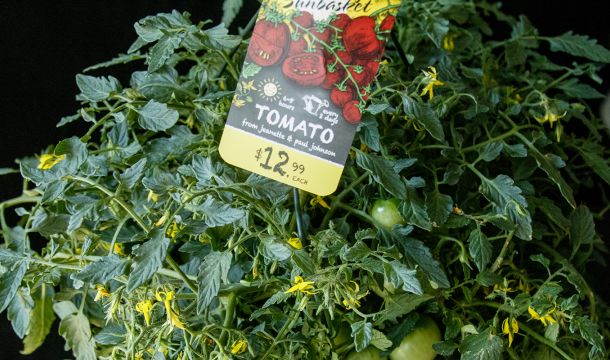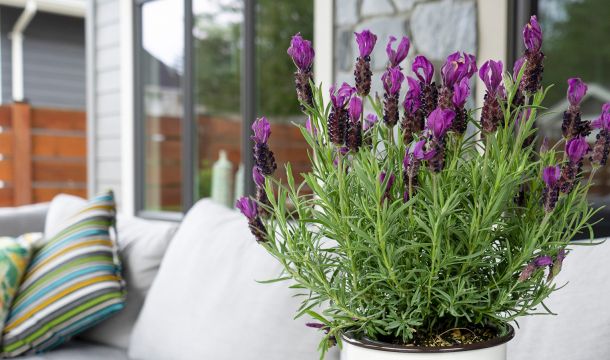Decoding the E3 Petunia
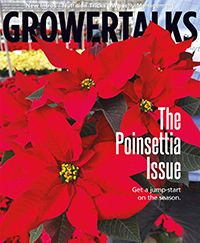
You might know the E3 Easy Wave Petunia as “the early one,” the feature with the easiest hook. Earliness, however, isn’t the key part of this series. If your firm ships finished Petunias in volume, especially Easy Waves, you need to pull some in for trial production. When you lift the marketing hood on this series, you discover the engine underneath is a core color program streamlined well enough for high-volume production cycles. Hot damn. This is something the Wave brand hasn’t had before and it’s a sleeper.
E3 came to life as an early blooming Petunia but from there it went on to address other production issues like lower PGRs and a tighter bloom window. It ships a collection of (8) solid singles and a mix (three pinks, two blues, a white, a red, and a yellow). Colors aren’t replaced, but added, so you can buy either E3 White or Easy Wave White to grow. Both choices exist, except for the yellow.
Shipped by Great Lakes Greenhouses out of Kalamazoo MI on week 11 (March 13).
Notice the consistent crops in the background.
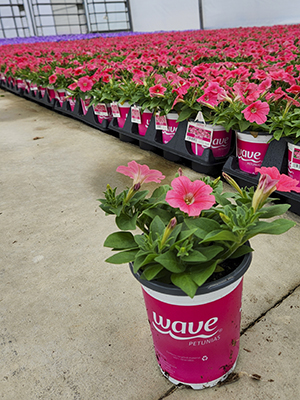 |
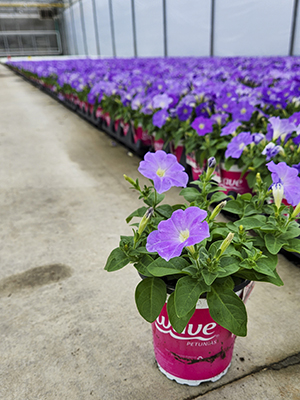 |
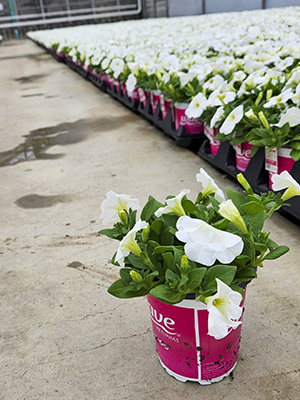 |
| E3 Easy Wave Pink | E3 Easy Wave Sky Blue | E3 Easy Wave White |
Easy Wave's Core Color Team
At first, the color selection is a head scratcher. Nothing fancy here. Usually Wave programs have a theme, but E3 has no funky patterns or unique habits; however, the individual colors do bloom together underneath a single regime. Wait a minute. This is different in an important way.
If you stand back and look at the larger brand family for a moment, you can see the issue. The Wave strength is diversity with lots of colors and styles and types built up over decades of additions and extensions. Some are vigorous, some are compact, some spread out, some sit upright. Each color does its own thing. As a result, Wave Petunias don’t have a central protocol to bind the brand family into a cohesive growing strategy. Every protocol is an exception and that’s the rule.
E3 zags on this philosophy by necessity. The tight coordination of color blooming was an offshoot of PanAm’s early spring efforts. To shove the ship date earlier into the calendar, E3s needed to thrive under less daylight—to become less sensitive to daylight length and quality. This change bunched the bloom times into a narrow window.
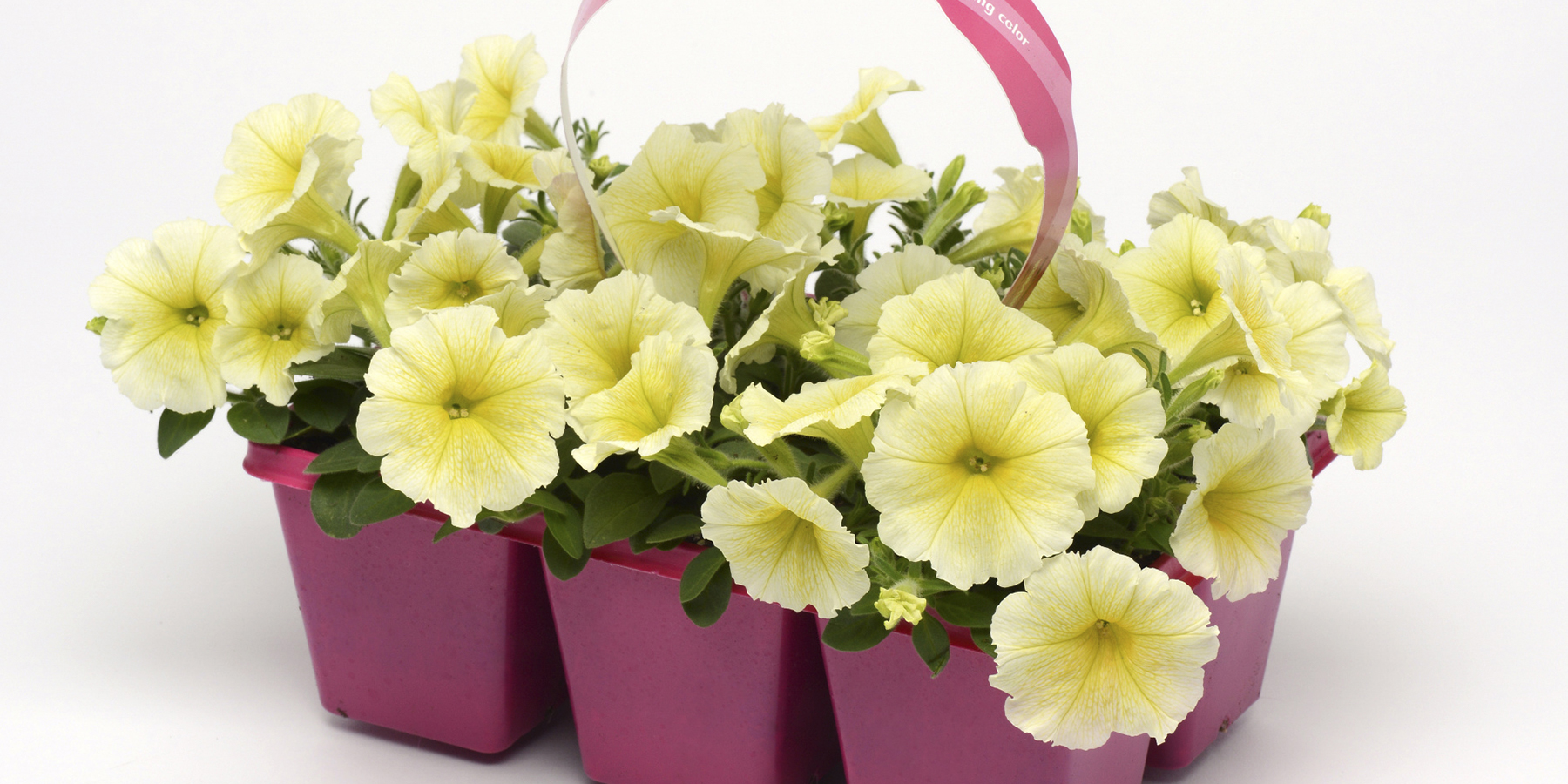
If you have grown Easy Wave Yellows, you've grown E3s. It moves to the new series.
Using Less PGRs
E3’s true strength appears as the crop grows out over the full season. It takes a lot of PGRs to produce a high quality Wave product, so any reduction generates real savings. Inputs for E3 and Easy Wave cost the same, so direct savings come from reduced chemistry and payroll.
As a rule, E3 takes about half the PGRs of the equivalent Easy Wave colors. Dark blue is the exception—blues among Petunias always tend to be more vigorous. While other colors take an initial half-load, dark blue needs closer to two-thirds to start. Afterward you can follow through with half-loads.
Indirect savings come from better yields. Chemistry tries to push and shove a plant into position, but it also introduces more variations within a crop. If E3 genetics does more of the heavy lifting, then a crop needs less chemistry to achieve more consistency.
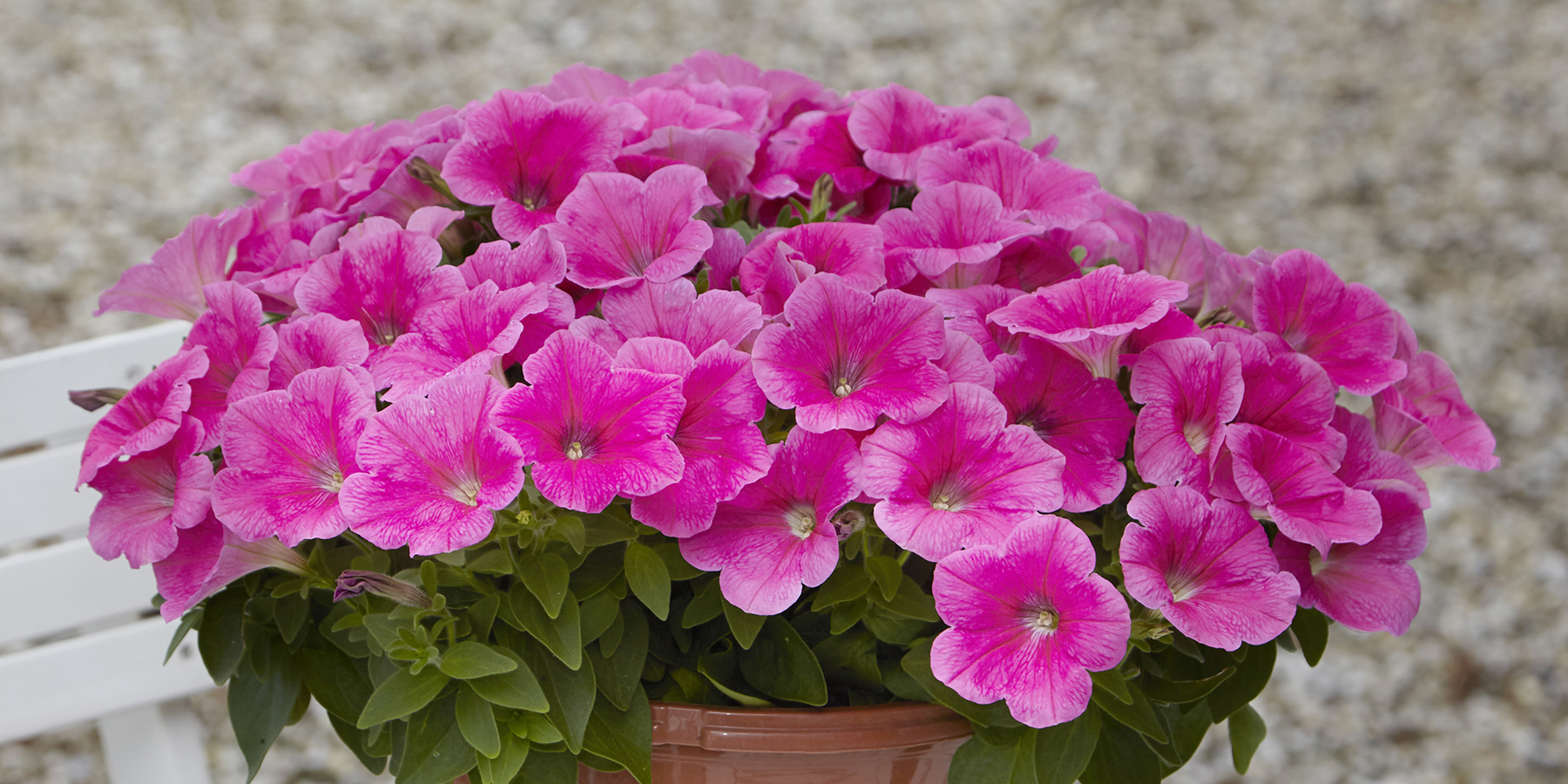
Pink Cosmos is the most "different" of the E3s with a throat that darkens slightly.
Better Management of Early Season Risks
E3’s earlier bloom window is a key factor when it comes to managing the unknowns of early spring. Some colors attained a modest half-hour improvement but others, like the pink, shrank from 11 to 9.5 hours. As a rule, an E3 crop opens about a week earlier than its Easy Wave equivalent at the beginning of a season.
If you work with contract ship dates in early spring, you will benefit from E3’s ability to buffer risks. A non-E3 color could hit an early ship date just by backing off the sow date, but its greater sensitivity to daylight makes it vulnerable to disruptions like a string of cloudy days. E3 buffers that risk because it’s less likely to stall out, waiting for better times. Southeastern growers with early spring Petunia crops should take notice, but even Northern growers benefit from this daylight performance buffer.
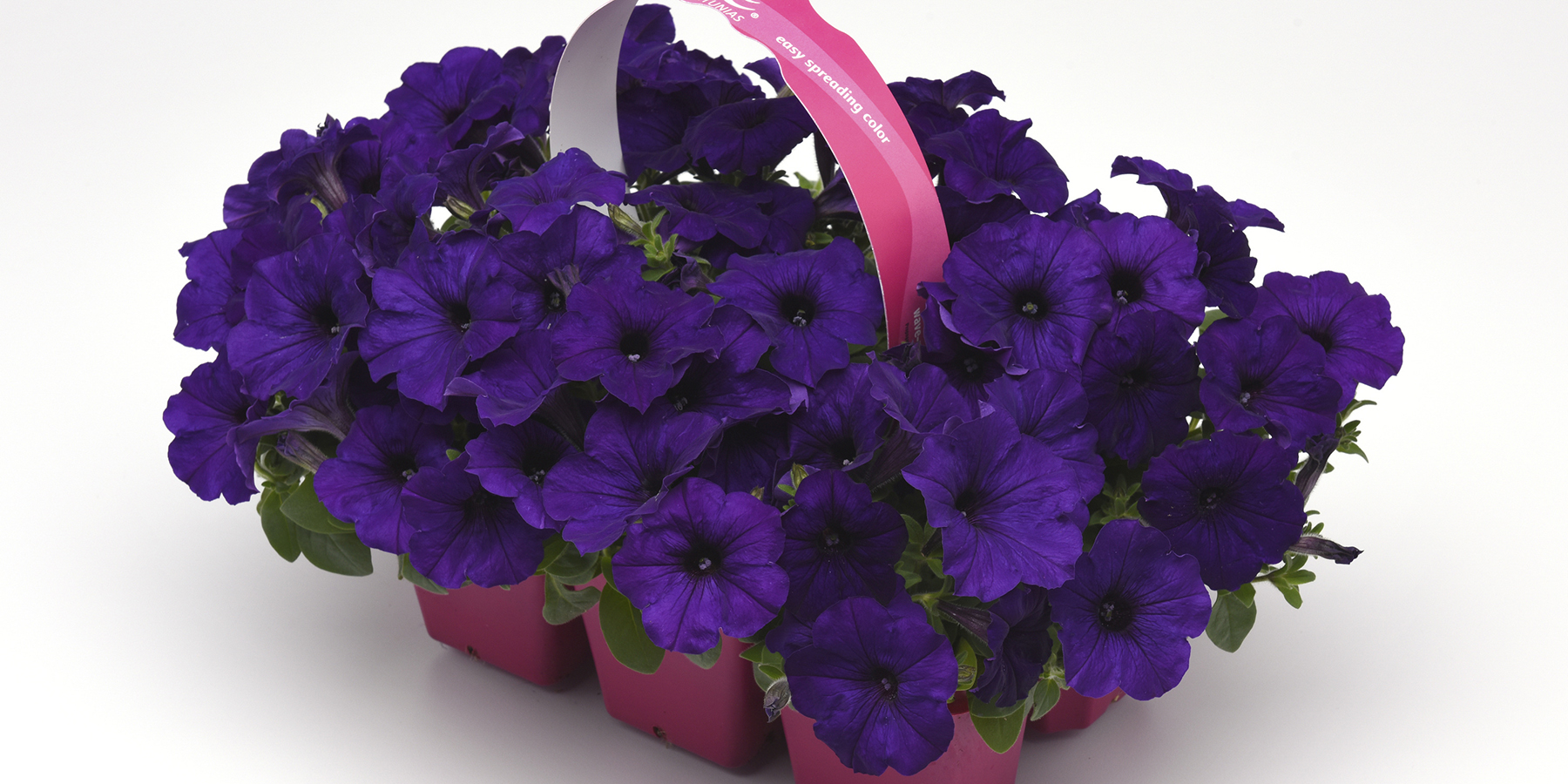
Dark Blue is the most vigorous. It needs about 2/3rds PGR before going to half rate.
Does It Pan Out?
For a series in the wild, E3 is young at 18 months of seed availability. Liners are generally available, but the first full-volume runs just shipped this year in mid-March. They are out there, but they are still rare. Early feedback is good, lining up with results seen in trial productions: tight bloom window, less PGRs, quality finish. Confirm, confirm, confirm. The regime is much easier to manage with less moving parts. Already, some growers plan to increase their commitment from early season to full season production based on their results.
Some rough spots do exist: the white blooms a touch early and the dark blue lags a little behind, so we are talking about a 7-10 day bloom window. The dark blue needs more attention. I haven’t heard anything about summer performance yet. For their part, PanAm states a long-term commitment to the E3 strategy, so we can expect improvements and updates as the years roll by.
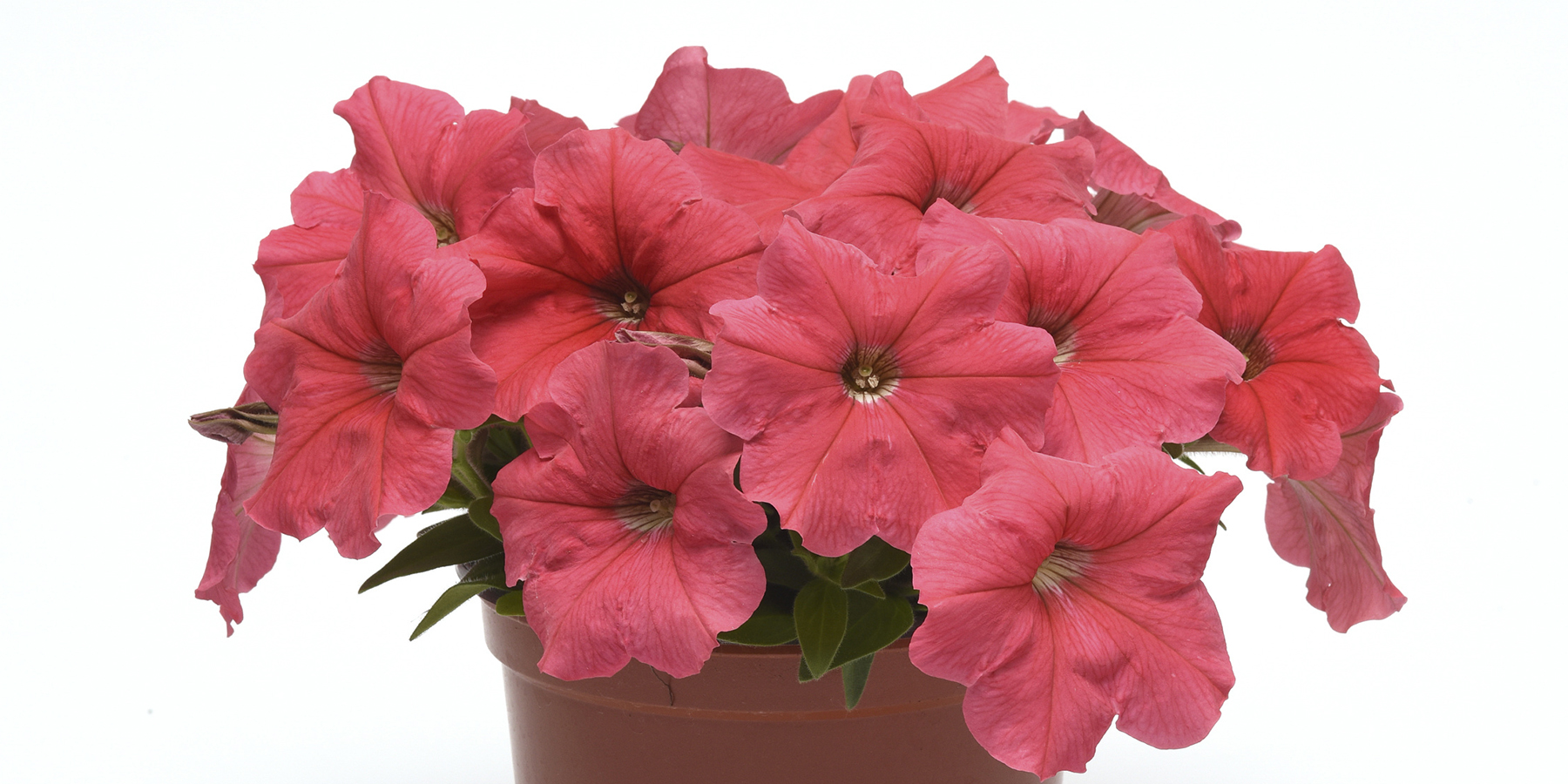
E3 Easy Wave Coral is the only salmon-style color.
Every facility is different. It will take three years or so for E3’s potential to fully unfold. Buyers have to figure out its place in the purchase order pecking order. My advice is to pull in some E3s and see how they trial for you. Treat them as Easy Wave’s spin on a core color program and see if you can pick up those cost savings. If you can ship some earlier crops as well, then it’s a bonus.
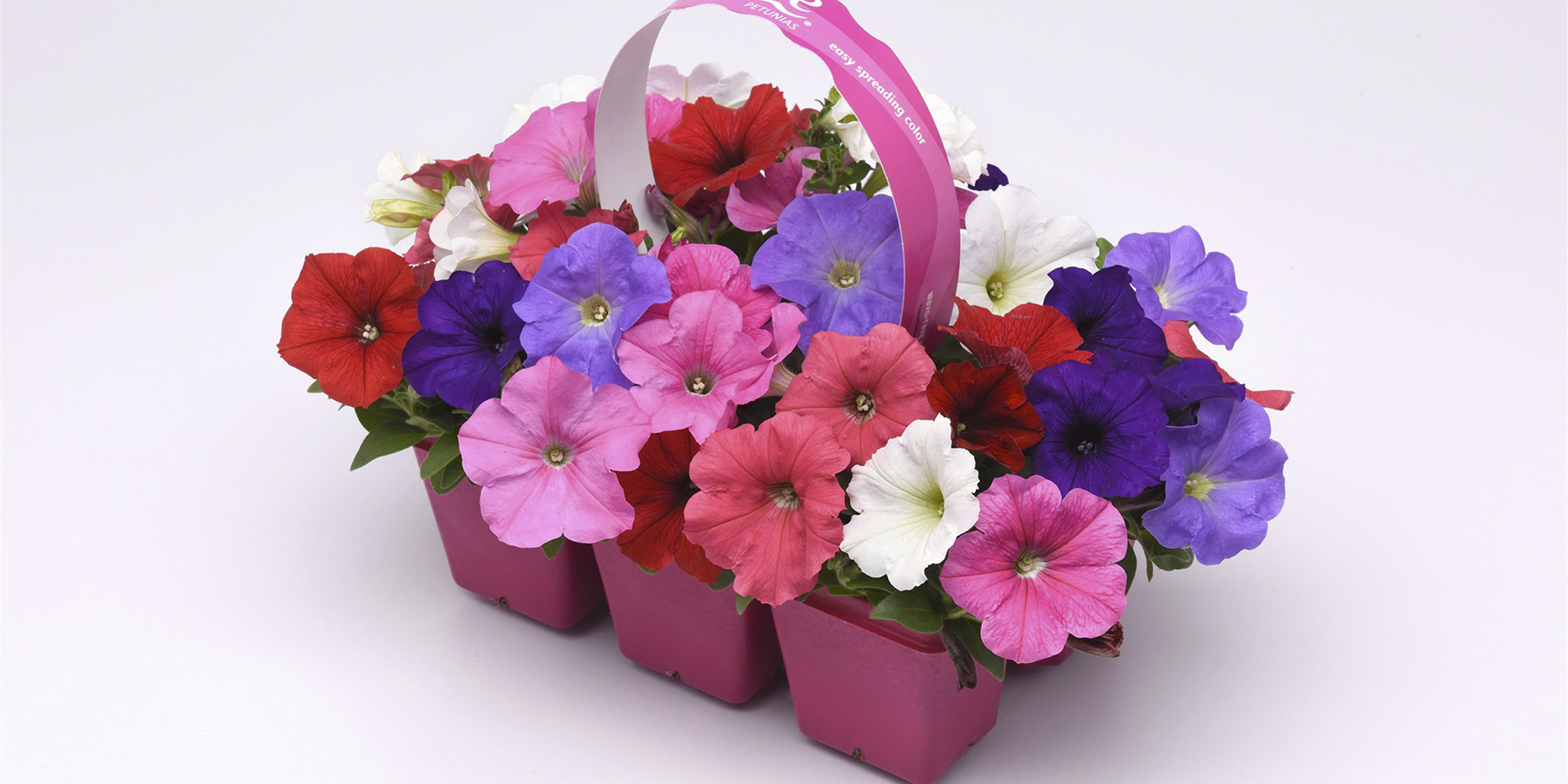
The single E3 Mix sells all the colors.
Popular Articles
